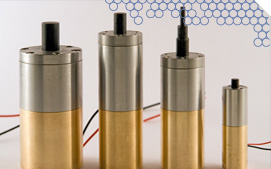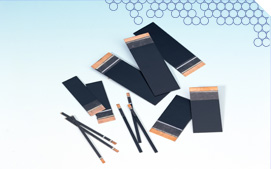Piezo Actuators: Types and Applications
A piezoelectric actuator converts an electrical signal into a precisely controlled physical displacement (stroke). If displacement is prevented, a useable force (blocking force) will develop. The precise movement control afforded by piezoelectric actuators is used to finely adjust machining tools, lenses, mirrors, or other equipment. A piezo actuator can be used to control hydraulic valves, act as a small-volume pump or special-purpose motor, and in other applications requiring movement or force.
What Is A Piezoelectric Actuator?
To answer the question, “What is a piezoelectric actuator?” and to learn how the device works, it’s first helpful to understand that all actuators — from hydraulic and pneumatic to mechanical and electric — are machine components that convert a type of signal energy into a desired controlling motion. Think of what happens when an operator presses a button that prompts an electric actuator to transfer the operator’s signal into rotary motion to either open or close a valve, and you have the basics of how all actuators function.
In piezo actuators, the piezo effect is of primary use. Elementary piezoelectric materials change dimensions when a force and/or voltage is applied. That’s why these types of actuators are highly useful in applications that call for the precise positioning of mechanical devices — from mirrors on satellites and telescopes to non-magnetic and miniaturized medical devices.
Plus, since piezoelectric actuators give off little heat and consume almost no power when operating in an energized state, they’re widely used across a broad selection of industries, including everything from automotive and defense applications to scientific instrumentation and ultrasonic machine controls.
>> Shop Stack Actuators || Shop Stripe Actuators <<
Stack Actuators vs. Stripe Actuators
Two different types of piezo actuators are stack actuators and stripe actuators.
Stack Actuator: Piezo stack actuators offer low stroke and a high blocking force. Based upon the user’s requirements stack actuators can be either discrete or co-fired.
Discrete stacks (high-voltage stack actuators) are composite structures made by stacking separately finished piezoelectric ceramic discs or rings and metal electrode foils with an adhesive. Operating voltages ranging from 500 V thru 1,000 V are typical.
Co-fired multilayer stack actuators, also called “monolithic stacks”, involve no adhesive, but rather a high temperature sintering of the complete ceramic and electrode pile. Operating voltages of a co-fired stack are up to 200 V. Rectangular cross sections are typical due to the ease of cutting processes in production.
Both the discrete and co-fired stacks can be insulated with a coating material — a bare stack — or encased in stainless steel when protection from mechanical stress and environmental extremes are needed.
Stripe Actuator: A Stripe actuator, also called a bending actuator, is designed to produce a relatively large mechanical deflection in response to an electrical signal. This deflection offers a large stroke and a very limited blocking force when compared to a stack actuator.
In a stripe actuator, two thin layers of piezoelectric ceramic are bonded together, usually with the direction of polarization coinciding, and are electrically connected in parallel. When electrical input is applied, one ceramic layer expands and the other contracts causing the actuator to flex.
Piezoelectric Applications
Given its simple design, minimal moving parts, no requirement for lubrication to operate and the high reliability characteristics, the piezoelectric actuator is used in a variety of industrial, automotive, medical, aviation, aerospace and consumer electronics applications. Piezo actuators are found in precision knitting machinery and braille machines. The silent drive characteristics make piezo actuators an excellent auto focusing mechanism in microphone-equipped video cameras and mobile phones. Finally, since piezo actuators require no lubrication to operate, they are used in cryogenic and vacuum environments.
Using a stack actuator, extremely fine, virtually infinite resolution is possible with very high voltages corresponding to minute movements of expansion. A piezo actuator can operate billions of times without wear or deterioration. Its response speed is exceptional and it is limited only by the inertia of the object being moved and the output capability of the electronic driver. When operating in an energized state, a piezoelectric actuator consumes virtually no power and generates very little heat.
For more information about piezoelectric actuators and piezoelectric actuator applications, please download our reports: Piezo-Mechanics: An Introduction and Lowvoltage co-fired multilayer stacks, rings and chips for actuation.
High-Quality Piezoelectric Actuators From APC International, Ltd.
At APC International, we specialize in meeting the piezoelectric ceramic and device needs of our customers — including both piezo stack actuators and stripe actuators. Across every step of the manufacturing process, we’re here to help you get the right piezo device for your needs.
Our staff is highly trained, extremely experienced and ready to support you throughout the design, construction and testing of your piezo actuators. Our philosophy is that when you choose APC International, all of your piezoelectric needs should be met in a time-sensitive and cost-efficient manner.
To learn more about our full line of piezoelectric actuators, pzt actutaors and other piezo materials, contact us today. Call (570)726-6961 to speak to one of our representatives.
Explore Our Additional Resources:




